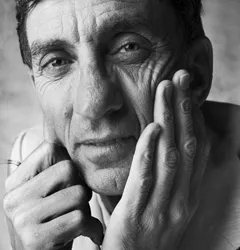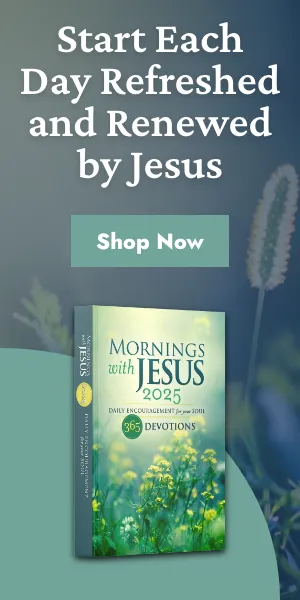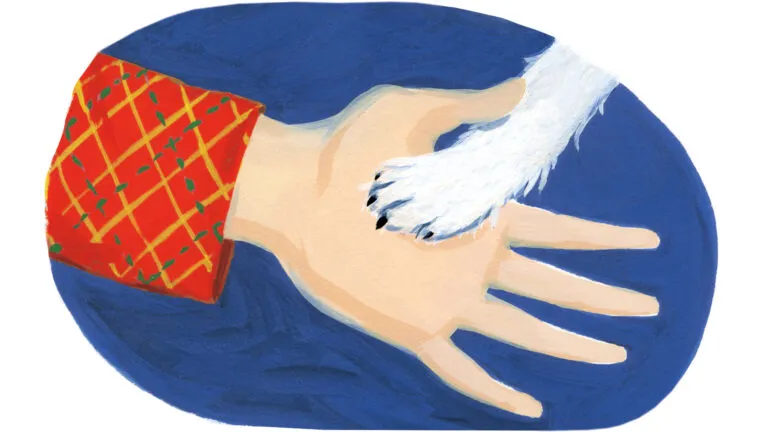I’m a dreamer, but I’m also a practical man. It’s my nature. I see things that need doing, and I itch to get them done, and done right. Yet little of what I have accomplished in the last 18 years would have been possible without an element that some wouldn’t think all that practical. Quite simply, this element is prayer. I believe that prayer has given me resources and power beyond my abilities. I have relied on prayer to build something from nothing many times.
Back in 1965, when my wife, Linda, and I were making a new start in our lives, we had no idea of what God expected of us. So we left our home in Montgomery, Alabama, and drove down to Florida with our two children in an effort to find a new perspective on things. I can still remember our first fumbling prayers during that week. “What do You want us to do, Lord? We just want to serve You. We’re at Your disposal.”
A few months later the Lord led us to Zaire, the old Belgian Congo in Africa, where we visited missionaries of the Christian Church (Disciples of Christ), who pointed out to us the pitiful living conditions of the people there. But, though we didn’t know it at the time, the Lord had an answer for us the very next week after we opened ourselves to Him in our prayer life. On the way home we stopped off to see an old friend who was living in a Christian settlement near Americus, Georgia, called Koinonia Farm. The word “Koinonia” comes from the Greek word for community, and the farm was just that, a community of believers caring for one another.
That day we also met the farm leader, Clarence Jordan, who had founded Koinonia in 1942. He told us how the interracial community had at first thrived by selling eggs and produce at a roadside stand until the Ku Klux Klan organized a boycott against its products and terrorized its residents during the late 1950s and early 1960s. By the time we arrived Koinonia had shrunk to just a handful of people.
From that visit on, Linda and I couldn’t get Clarence Jordan’s vision for a sharing Christian community off our minds. For the next few years I traveled and spoke extensively about the needs we had seen in Africa. I also helped to launch a $10 million fund-raising campaign for a small black church-related college in Mississippi. In June of 1968 we returned to live at Koinonia. We were slow in learning it but this was God’s answer to our prayers.
The first thing we did with Clarence Jordan was to reorganize the farm under the name Koinonia Partners—partners because we would be in partnership with God and with one another. Our first order of business was to construct simple but serviceable homes on 42 lots we laid out on the farm property. These houses were intended for low-income families who were living in tar-paper shacks nearby.
Had any realtor looked at our plans for financing, he would have said we were crazy. We resolved that we would be guided by a Biblical principle laid down in Exodus 22:25. We would charge no interest on our mortgages and make no profit. Furthermore, we would have low monthly payments, spread out over 20 years. Payments would be plowed back into a fund to build more housing.
When we started Partnership Housing in 1968, we didn’t have the money to build one single house. What did we do? We prayed about it. And, having prayed, we asked other people to help, and we started building on a shoestring. We took Jesus at His word—literally. And we prayed—literally—asking that the money would come in. And it did.
We finished building houses one at a time, and soon families who had spent their lives in shacks moved in. How touched I was to visit an elderly man in his new home and hear him tell me, “When it rains, I love to sit by the window and see everything all wet. I’m sittin’ in here, dry, and it ain’t rainin’ on me.”
Clarence Jordan died suddenly in 1969, but by then he had lived to see his dreams for Koinonia reborn. By 1972, our first Partnership Housing project, Koinonia Village, was nearly finished and we laid out sites for 32 new homes in another section. Linda and I began to feel, with more and more skilled and talented people moving in, that our work was about completed at Koinonia.
Again, we drove down to Florida. We holed up in a motel in Tallahassee. After a whole day of praying and wrestling with the direction our life should take, our conversation turned to Africa. “I wonder what’s going on in Zaire?” I mused to Linda. “Remember the pitiful shacks there? They sure could use some houses like we’ve been building at Koinonia—and other help, too.”
The more we talked about Zaire the more I began to wonder: Could the Lord be nudging me?
And then Linda said, “Why not give Bob Nelson a call?”
Dr. Robert Nelson was the Africa Secretary for the Christian Church (Disciples of Christ). It was he who had arranged our original visit to Zaire.
I dialed his headquarters in Indianapolis and talked to him about this strange idea about building houses in Zaire.
“Millard…” Bob exclaimed. “Your call…it’s providential! Yesterday, a representative of the Zaire church was in my office. He was asking for someone to help with building development. And I had to tell him we were sorry but we didn’t have anyone who could do the job.”
Had God spoken audibly, Linda and I couldn’t have been more dumbfounded.
So we were off to Africa with our by now four children to build houses.
The government gave us a tract in the middle of Mbandaka, Zaire, for 114 houses. But there was mind-boggling bureaucratic red tape and—at first—serious doubts that the houses actually would be built. There were shortages of materials and supplies and agonizing delays even when they were available.
Cement was our most important construction material. Just as we were about to complete the first of the houses, our supply dried up. Every morning I prayed about it: “Lord, let this good work continue. We’re confident the cement will arrive. Just give us patience to wait on You.”
When we were down to 35 bags of cement, Linda suggested that I try a British construction company that was working at the local airport. That same day they sent over 200 bags, and they supplied us with nearly 100 tons until our own cement arrived.
Three years after we had started the project we had a joyful celebration, dedicating 114 homes we had set out to build. That day the project’s residents named their community Losanganya—place of reconciliation. Our prayers for housing in Africa had been answered.
And it was this answer that fueled our hopes for an even larger vision. Shortly after our return to Koinonia Farm in 1976, I invited 35 people who had supported our work to a meeting. While we had been in Africa I had corresponded with a friend in San Antonio about a housing project for the homeless in that city. My dream was to expand this project across the entire United States and around the world.
In a three-day brainstorming session, we mapped out a new program and came up with a new name—Habitat for Humanity. We decided that the program would be financed by seeking donations and no-interest loans from affluent Christians and placing them in a Fund for Humanity. Once we had the fund started, we reasoned, it would sustain itself with no-interest payments from those living in the houses, and from volunteer labor from the families and other concerned people. It has done just that.
Our first project was to buy a few slum properties in southwest Georgia and fix them up with unskilled labor. In less than 10 years we’ve built and renovated over 1,000 homes in 64 American cities and 11 foreign countries. Habitat for Humanity is a totally ecumenical effort to provide shelter for all of God’s people.
Prayer keeps us in business. We have a few paid staff members and literally thousands of volunteers. We seldom have enough money or materials, but once we make our needs known to the Lord, He has always delivered.
Take last summer when we started renovation work on an abandoned building in the heart of New York City. We were a little worried about the venture. After all, this was the impersonal “big city,” and many were casting us as so many Don Quixotes tilting at windmills.
We had just $15,000 in the bank to start renovation of a six-story tenement on Manhattan’s Lower East Side.
For several months prior to our arrival, volunteers from local churches had worked Saturdays cleaning out tons of rotten boards and debris to make renovation possible. By the time our work group from Georgia had stepped off the bus to start work, we learned that most of that $15,000 had been spent on permits and building materials.
Jimmy and Rosalynn Carter were with us in the work party from Georgia. In fact, President Carter was largely responsible for getting the group together, and he and Rosalynn were hard workers during our week of intensive renovating. We wondered how the press would respond. Would our efforts be put down as mere publicity-seeking?
At first I felt as though the whole city was waiting for us to fall on our faces. “Lord,” I prayed, “You know our situation. We need materials. We need cash, and we could use a few more skilled people to help us. Lord, we know You won’t let us down, because we’re going to do everything we can to make this project a success.”
Each morning we arrived bright and early and began ripping out rotting timbers and replacing them with strong new ones. Soon I believe people began to see that our little group from Georgia meant business. Then things began to happen.
Literally hundreds of affirming news stories began to appear on TV, in papers and magazines throughout the city and the nation. In New York the outpouring of support was incredible. Individuals gave us checks and cash—from $5 to $10,000, unions donated labor, businesses contributed materials and the use of equipment, and on our final day, a large gathering at St. Bartholomew’s Church collected nearly $10,000 for us at a special service.
And there was more, much more, such as the woman who came down from the Bronx to give us a geranium as a symbol of hope, and the Chinatown restaurateur who gave us a gala dinner for free. By the time Linda and I left New York, it was no longer the impersonal “big city” for us; it was a warm, loving and caring place.
Once again we had asked, blessed our petition with the work of our minds and bodies, and had received. Yes, I believe in prayer. I believe it empowers me, moves me past need, past difficulties and obstacles. And I believe that prayer is a real and living force that can work for you, too.
Download your FREE ebook, A Prayer for Every Need, by Dr. Norman Vincent Peale





